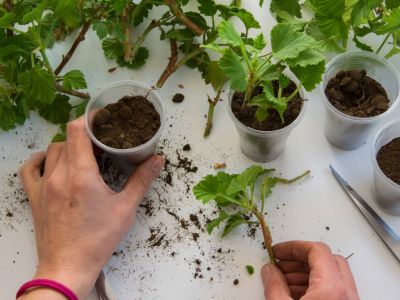Plant propagation containers can be as simple as recycled kitchen containers or as elaborate as commercial self-watering systems. If you’re just beginning to grow your own seedlings instead of buying them, start collecting containers used to propagate plants and fill in your collection with homemade versions to avoid a huge expense at the beginning of the season.
Types of Pots for Plant Seeds and Cuttings
The type of containers for propagating plants depends on what you want to grow and how many plants you plan to plant. Each method of plant propagation requires a different sort of container. When it comes to starting out with seeds, six-pack pots and propagation flats are the containers of choice. Tiny seedlings don’t take up much room and by the time they grow to a viable size, you’ll be nipping off and discarding half of them. You can buy empty six-pack pots in any garden center, but it’s much less expensive to make your own. Poke holes in cleaned-out empty yogurt cups or egg cartons, create small pots out of old newspaper, or tape up the bottom of paper towel roll sections to create small, temporary homes for seeds. Alternately, plant a number of seeds in one flat and lift them out to transplant into individual pots. Use gift boxes or milk cartons if you want to avoid commercial products.
Plant Propagation Containers
Pots for plant seeds and cuttings are similar, but the ones for rooting a cutting are generally larger. The ideal situation when rooting plant cuttings is to leave them in the potting soil for as long as possible. Tiny six-packs aren’t large enough to hold the roots for a viable plant so the larger the pot, the better. Use commercial plastic pots, which can be washed and sterilized each spring, or disposable containers such as milk cartons. Make sure each planter has multiple drainage holes in the bottom and place the pots on a waterproof tray to prevent water from dripping onto countertops and windowsills.
